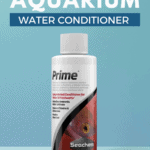Clean, healthy tank water is essential if your fishes are to be healthy and happy. So, you must carry out weekly maintenance and cleaning of the tank to keep levels of ammonia, nitrites, and nitrate to the minimum.
That process involves changing some of the water, but tap water contains chemicals, minerals, and heavy metals that keep the water safe for us to drink but which make it lethal for your fish to live in. Fortunately, you can solve that problem by using a tap water conditioner.
But how long does the water conditioner take to work? And what’s the best aquarium water conditioner? In this guide, we tell you everything you need to know about tap water conditioning products, including detailed water conditioner reviews and our personal recommendations.
Quick Comparisons Of The 6 Best Aquarium Water Conditioners
| IMAGE | BRAND | DETAILS | |
|---|---|---|---|
 | API Tap Water Conditioner |
| View Product |
 | Tetra AquaSafe Plus Freshwater & Marine Aquarium Water Conditioner |
| View Product |
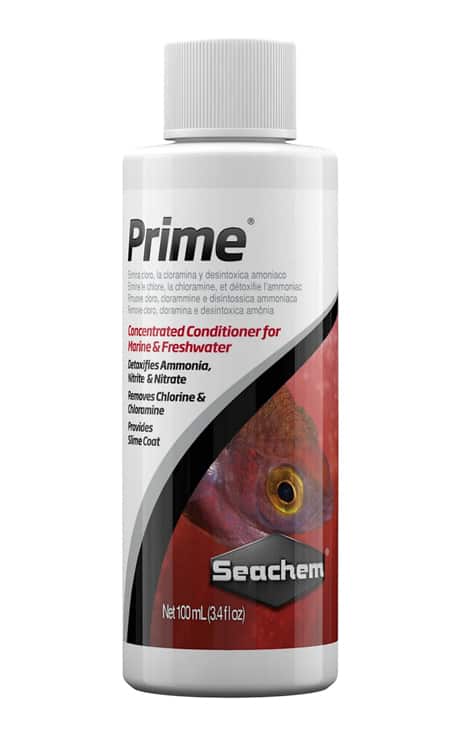 | Seachem Prime |
| View Product |
 | Aqueon Tap Water Conditioner |
| View Product |
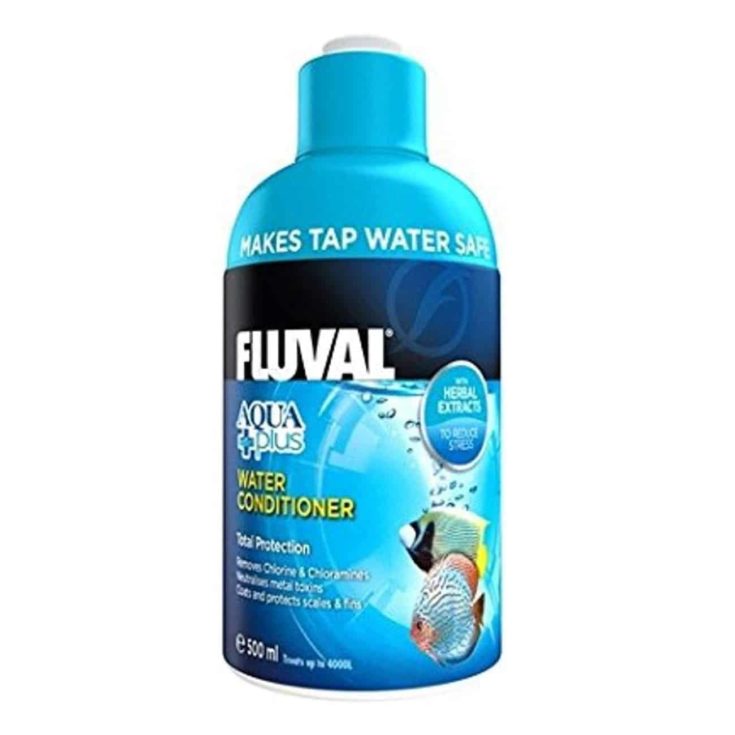 | Fluval Water Conditioner For Aquariums |
| View on ChewyView on Amazon |
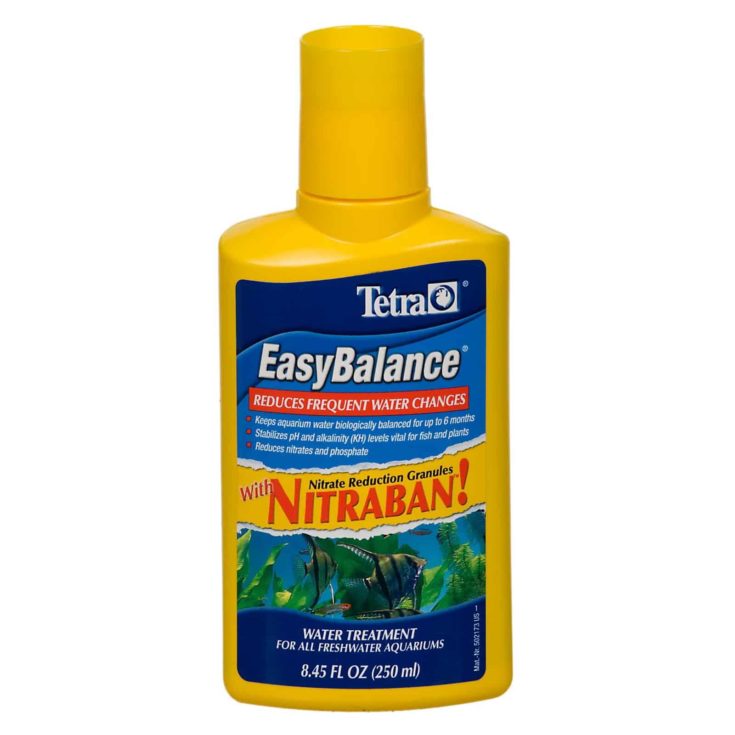 | Tetra Easy Balance Plus Weekly Freshwater Aquarium Water Conditioner |
| View Product |
What Is An Aquarium Water Conditioner?
An aquarium water conditioner is a liquid chemical that you add to your fish tank to neutralize the chlorine, chloramine, and other harmful substances that are contained in tap water. Unfortunately, although your local water company adds these chemicals to the mains supply to make the water safe for you to drink, chloramine and chlorine can be fatal to fish and plants.
Chlorine And Chloramine
Chlorine has traditionally been added to tap water for disinfection purposes and to kill bacteria. Years ago, you could make tap water safe for your fish tank by allowing the water to stand in a bucket for 24 hours, stirring it occasionally. Chlorine is a relatively unstable chemical that evaporates into the air after a day or so, meaning that your bucket of tap water would be left safe for your fish.
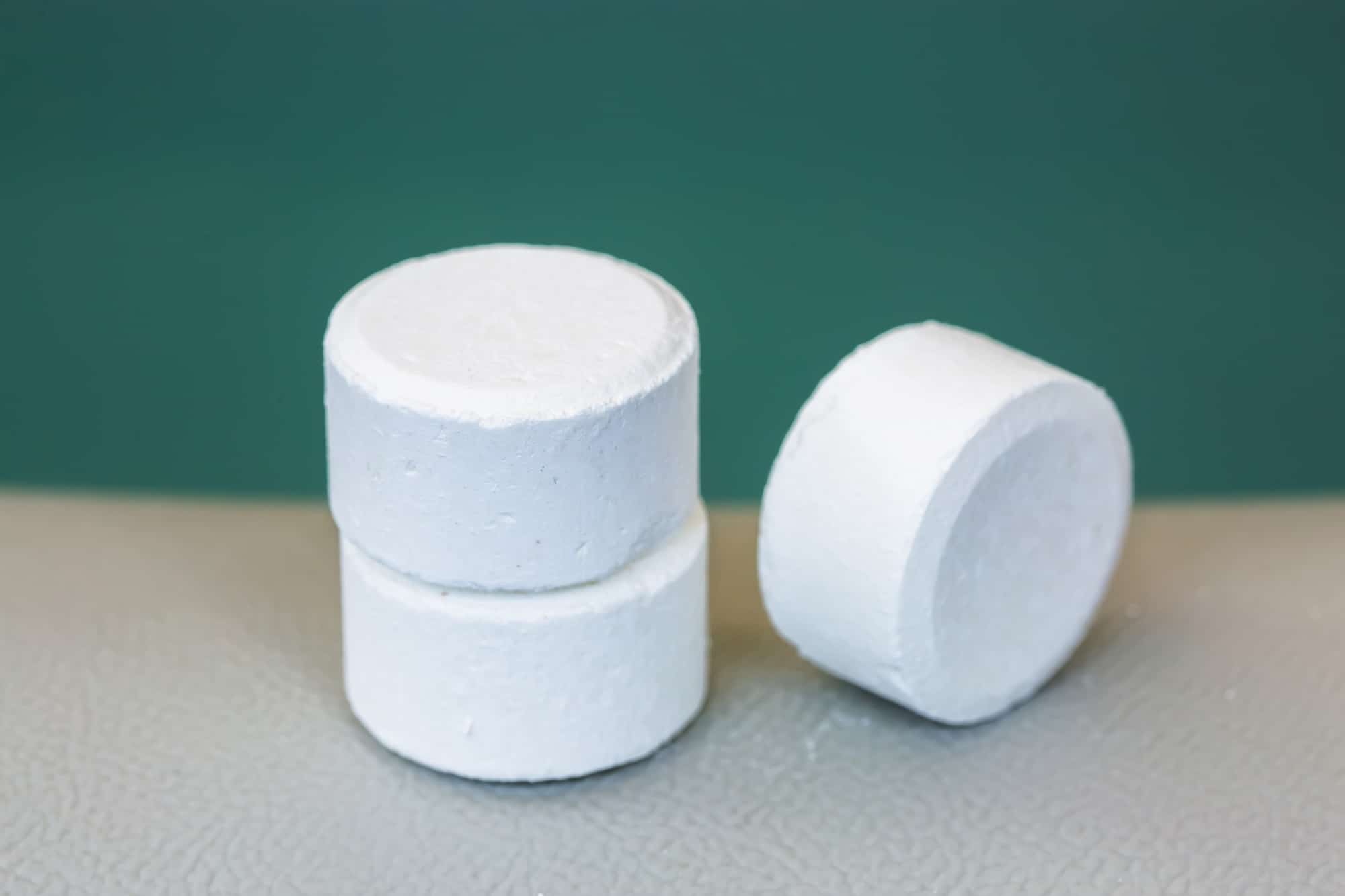
However, these days chloramine is often used by water companies instead of chlorine because it is more stable. Chloramine is one of a group of chemicals that contain chlorine and ammonia, which is lethal to fish. Unfortunately, chloramine doesn’t evaporate in the same way that chlorine does, so the “stand and stir” tank water purification method is no longer effective.
How Do Aquarium Water Conditioners Work?
Tap water conditioners work by neutralizing the chlorine that’s contained in the water through the formation of ionic bonds that render the chlorine harmless. Explained simply and in layman’s terms, the water conditioner acts like a magnet, drawing the chlorine molecules away from your fishes’ sensitive gills and making the water safe for use in your fish tank.
However, if the water contains chloramine as well as chlorine, you’ll need to use a conditioner that can split the ammonia/chlorine bond and deal with each individually. To complicate matters, many water companies habitually switch between using chlorine and chloramine. So, it’s safest to use a tap water conditioner that deals with both.
Types Of Tap Water Conditioners
There are three main types of tap water conditioners that you’ll see for sale in your local fish store:
Dechlorinators

Dechlorinators contain small amounts of sodium thiosulfate, which effectively gets rid of chlorine. However, these products don’t work on chloramine.
Chloramine Neutralizers
Chloramine neutralizers are extremely useful products that are formulated to tackle chlorine, ammonia, and sometimes heavy metals too.
These products work by breaking down chloramine and neutralizing ammonia in one of two ways:
- By binding to the molecules of ammonia, rendering them harmless to your fish.
- By converting the ammonia to ammonium, which is also harmless to fish.
Note that if your ammonia test kit is not specifically aimed at testing the water for the presence of ammonia (NH3), it may show that the water contains ammonium (NH4), which is harmless to your fish. So, always check that you have a test kit that tests only for NH3.
Complete Water Conditioners
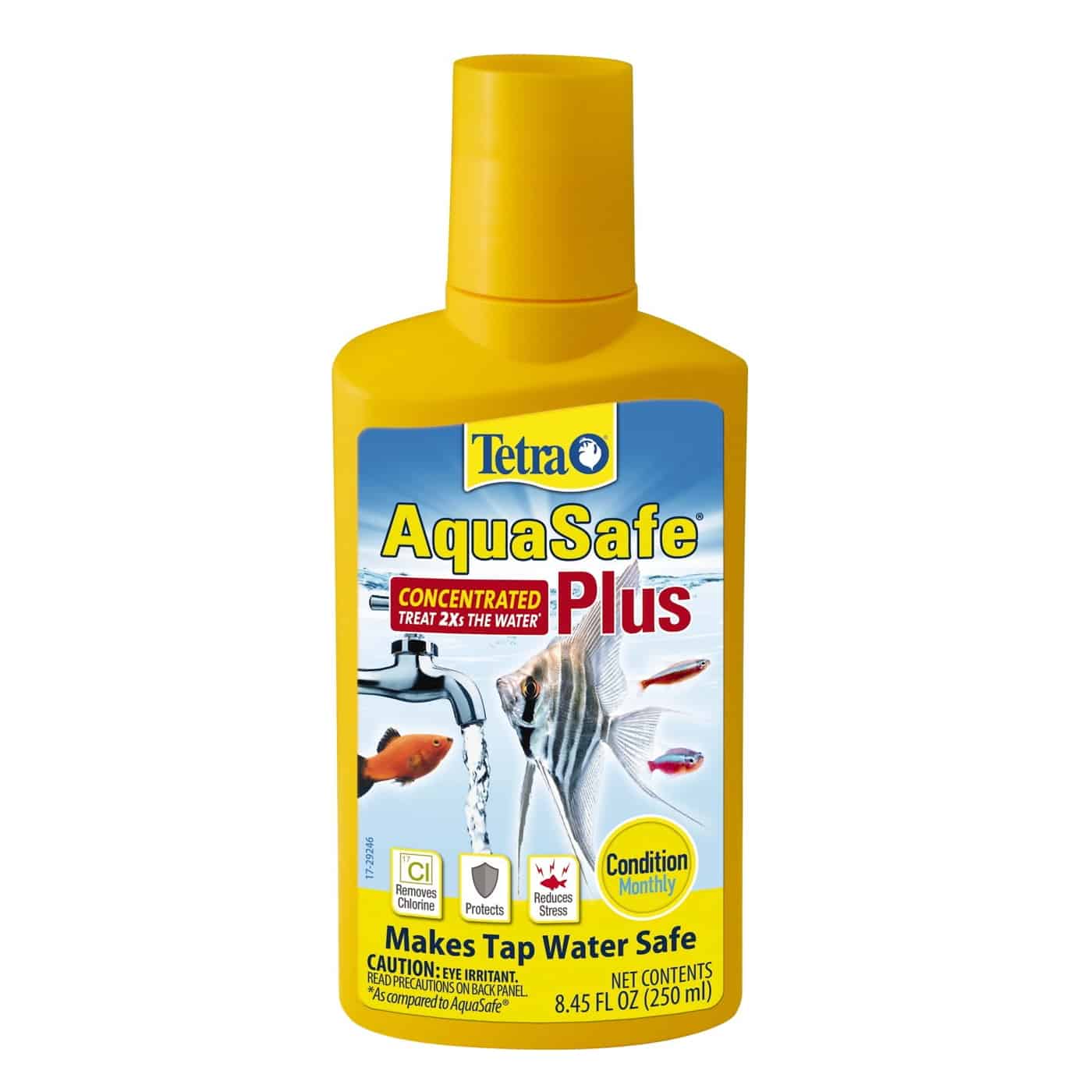
Complete water conditioning products are designed to deal with chlorine, ammonia, heavy metals, and even copper, which is handy if your house has old copper or lead pipework. Complete water conditioners can also work as pH buffers, contain chemicals that offer protection for your fishes’ slime coats, and more.
Check the product label to see exactly what actions the conditioner offers, as that varies depending on the brand.
Can You Use A Water Conditioner In Marine Aquariums?
Water conditioners should not be used in a saltwater tank unless in an emergency. That’s because water conditioners don’t remove chloramine from the water, they neutralize it. So, although the water is safe for your fish, it still contains a valuable food source for algae and cyanobacteria.
A better water treatment option for a saltwater tank is deionization or reverse osmosis (DI/RO), which doesn’t have the same issue. If you do decide to use a water conditioner and you have a protein skimmer, choose a product that won’t cause the protein skimmer to foam.
What About Plants?

Chlorine, chloramine, and heavy metals don’t only harm your fish; they can kill your plants too. So, if you have live plants in your tank, using a water conditioner will help to keep them safe and healthy too.
Home Water Conditioners
As well as aquarium-specific water conditioners, there are a few products and devices that you can use to treat the water that comes into your home through the mains. In some areas, the water contains lots of minerals, such as calcium. High levels of minerals make the water “hard.” Hard water can taste unpleasant, and the hard mineral deposits that are left behind can cause problems with domestic appliances and plumbing systems.
Water that contains a lot of calcium can also cause issues in your aquarium. Hard, white mineral deposits can coat your light units, filtration system pipework, and the underside of the tank hood.
However, there are some enhancements to your home plumbing system that can help to combat the problems of hard water. Note that these water conditioning mechanisms don’t make tap water safe for use in your fish tank, and you will still need to use an aquarium water conditioner.
Magnetic Water Conditioner

Magnetic water conditioners can be added to your home’s plumbing system to help get rid of limescale. These devices direct water through a strong, uniform magnetic field by placing two powerful neodymium magnets on either side of the incoming pipe.
Magnetic water treatment doesn’t take any calcium from the water, meaning that on paper, the water is just as hard as it was before it passed through the magnets. However, it’s claimed that the magnets change the structure of the calcium deposits that form so that the minerals are less likely to adhere to pipes and other surfaces. So, you may not experience the problems that hard accumulations of limescale can cause if you fit a magnetic water softener.
Tank Water Conditioners
Tank water conditioners are units that process the water that enters your home, removing the minerals that make the water hard, and using sodium and potassium to condition the water. Water conditioning devices come in different sizes.
Metered Water Conditioner

Metered water conditioners are the most economical form of home tank water conditioners. Metered units only regenerate the water when a pre-set volume of softened water has been used, irrespective of the time period that this takes. This system prevents over or under regenerating of the water softener when the demand for water varies.
The volume of treated water is calculated according to the amount of minerals that your water supply contains, the number of people living in your home, and the capacity of the water conditioning unit that you have installed.
Digital Water Conditioners
Digital water conditioning units are a popular choice with householders, as these devices are generally more efficient than the more traditional analog version. Digital conditioning units use less potassium and salt, and some include additional functions such as chlorine remover and heavy metal filters, which is good news for fish keepers. Also, these devices are cheaper to run and require very little maintenance than their old-style counterparts, saving you money in the long run.
Why Do You Need A Water Conditioner?

Tap water is unsafe for fish because it contains chlorine and chloramine that can cause damage to the sensitive tissue of your fishes’ gills. You must use a suitable water conditioning product, such as those we recommend in the product review section later in this guide, to make the water safe for your fish before adding it to your fish tank.
You can also make tap water more palatable to drink and less damaging to your domestic pipework by installing a home water softening unit, as described earlier in this article.
Benefits Of Water Conditioners
Using water conditioners has many benefits, both for your family and for your fish!
- Water conditioners are easy to use and relatively inexpensive to install.
- Home water conditioners can help to reduce scaling and blockages in domestic pipes and appliances, saving you money on expensive repairs.
- Water conditioners make aquarium water safe for your freshwater fish and plants by removing ammonia and chloramine without impacting the pH level of the water.
- Some aquarium water conditioners help to support fishes’ protective slime coating.
How Often To Use An Aquarium Water Conditioner

As a general rule of thumb, you need to use an aquarium water conditioner whenever you carry out a partial water change in an established setup. The idea is to neutralize the ammonia and chloramine in the tap water that you add to your tank. So, whenever you need to add fresh tap water to your aquarium, you’ll need to treat the water with a water conditioner first.
When To Add Water Conditioner
Tap water should always be conditioned when you set up a new tank and during every partial water change thereafter. Add the water conditioner to a bucket of clean tap water, as per the manufacturer’s dosage instructions, and then add the treated water to your fish tank.
I prefer to add the prescribed dose of treatment to the bucket as the water is running so that the product is mixed into the water. By the time the bucket is full, the water conditioner is activated, and the water can be added to the tank.
New Aquariums
When you set up a new tank, and you’re using the fishless cycling method, you should use a basic dechlorinator, rather than a complete tap water conditioner. Although you want to neutralize chlorine and chloramine, you don’t want to remove ammonia at this stage. That’s because your beneficial bacteria need ammonia to kick start the nitrogen cycle.
Partial Water Changes

After the initial tank setup, and each time you carry out a partial water change going forward, you must treat any tap water that you add to the tank with a complete tap water conditioner. If you don’t do that, you risk killing the beneficial bacteria in your filtration unit and harming your fish.
How Much Water Conditioner?
There’s no rule of thumb for dosage levels of water conditioners. How much to use depends on the brand and the nature of the product.
Always follow the manufacturer’s instructions for dosage, and use the special pipette or measuring cup provided with the product to accurately measure the conditioner.
How Long Does A Water Conditioner Take To Work?
Water conditioners are generally very fast-acting. Most of these products will neutralize chlorine and chloramine in a bucket of tap water in five minutes or less. Again, check the manufacturer’s guidelines for the approximate timescales.
What To Look For When Buying An Aquarium Water Conditioner

There are a few things to look out for when choosing an aquarium water conditioner:
- a formula that includes protection from chloramine, chlorine, ammonia, nitrites, and heavy metals
- a product that is suitable for use in freshwater and saltwater tanks (if applicable)
- a conditioner that boosts slime coat production
- a formula that adds electrolytes to the water to stimulate good growth and healthy fish
You also need to read the product label carefully to see what chemicals the formula works with. To provide comprehensive water care for your fish, you may need to use an additional treatment.
Top 6 Aquarium Water Conditioner Reviews
In this part of our comprehensive guide, we’ve picked out six of the best aquarium water conditioners on the market at the time of writing. Each product is brought to you by a reputable manufacturer and is safe and effective for use in your aquarium.
1. API Tap Water Conditioner

- 16 fl oz
- One drop per gallon
- Neutralizes chlorine, chloramine, detoxifies heavy metals
API is a very well-regarded manufacturer of aquarium products, including a range of water treatments.
This particular offering from API is a basic tap water conditioner, which works well at neutralizing chlorine and detoxifying heavy metals. The formula is concentrated too, so you don’t need to use a vast amount each time you add water to your tank, which helps to keep costs down. As you would expect from API, a clear dosage chart and measuring cap are included with the product.
However, the conditioner doesn’t contain anything that detoxifies or removes ammonia. So, if your tap water contains chloramine, the ammonia will be left behind once the chlorine has been eliminated.
| PROS | CONS |
|---|---|
|
|
2. Tetra AquaSafe Plus Freshwater & Marine Aquarium Water Conditioner

- 16.9 fl oz
- 5ml per 10 gallons
- Neutralizes chlorine, chloramine, detoxifies heavy metals
Tetra makes a huge range of aquarium water treatments, fish foods, and equipment that’s related to the hobby. Tetra’s Aquasafe Plus product can be used in freshwater and marine tanks, although they do recommend that you remove your protein skimmer before adding the product to the water.
The conditioner tackles chlorine, chloramines, and heavy metals, and it also contains seaweed extract to boost bacterial growth. A slime coating strengthener is added to the product to give your fish protection from attack by parasites and accidental injuries. As an additional bonus, the product contains essential minerals and vitamins to help your fish thrive.
The product is super-easy to use. You can either squeeze the bottle to dispense individual drops or use the cap to measure the required dosage.
| PROS | CONS |
|---|---|
|
|
3. Seachem Prime

- 3.4 fl oz
- 1ml per 10 gallons
- Neutralizes chlorine, chloramine, detoxifies heavy metals
Seachem Prime is the company’s flagship product, and the conditioner’s super-concentrated formula offers outstanding value for money, as you don’t need to use as much as you do with many other water conditioners.
Prime neutralizes chlorine and chloramine, converts ammonia to a non-toxic form, and detoxifies nitrites and nitrate, lightening the load on your biofilter. The product doesn’t affect the water’s pH, although it does make heavy metals safe for fish and plants. You can use the conditioner in a marine aquarium without fear that it will over-activate your protein skimmer. As an added bonus, the conditioner encourages the natural regeneration of the fishes’ slime coat.
It’s easy to measure out the correct dose by using the calibrated cap. Each thread in the cap equates to around 1ml, so you can easily work out how much you need at 5ml (or one capful) per 50 gallons of water.
| PROS | CONS |
|---|---|
|
|
4. Aqueon Tap Water Conditioner

- 16 fl oz
- 5ml per 10 gallons
- Neutralizes chlorine, chloramine, detoxifies heavy metals
Aqueon is a very popular brand of tap water conditioner that neutralizes chlorine and chloramines instantly, as well as detoxifying ammonia, heavy metals, and fish waste. As an added bonus, Aqueon Tap Water Conditioner helps to restore the fishes’ natural slime coating that can be lost when the fish are transported or netted. This water conditioner also helps to reduce fish stress, making it a great choice for new setups.
The correct dose of water conditioner is easy to measure by using the calibrated dosage cap.
This is one of the cheaper water conditioning products that we’ve looked at, but it does pretty much what all the other brands do at a slightly cheaper price.
| PROS | CONS |
|---|---|
|
|
5. Fluval Water Conditioner For Aquariums

- 15.9 fl oz
- 5ml per 10 gallons
- Neutralizes chlorine, chloramine, detoxifies heavy metals
Fluval’s aquarium water conditioner is a highly effective, comprehensive product that neutralizes chlorine and chloramines in tap water, as well as removing harmful heavy metals. Also, the product contains a special patented stress-relieving formula that protects the fish’s fins and scales, preventing the inflammation that can result following knocks and scrapes.
The water conditioner also contains pure herbal extracts that can reduce stress in fish during handling, transportation, and acclimatization to a new aquarium. The product is suitable for use in freshwater and saltwater tanks.
We think that Fluval’s product offers the hobbyist excellent value for money because of its holistic use formula.
| PROS | CONS |
|---|---|
|
|
6. Tetra Easy Balance Plus Weekly Freshwater Aquarium Water Conditioner

- 8.45 fl oz
- 5ml per 5 gallons
- Reduces nitrates and phosphates, stabilizes pH
As a tank matures, its water chemistry changes. That’s where Tetra’s EasyBalance Plus water conditioner comes into play, preventing several harmful conditions that can affect your fish as a result of those environmental changes.
The product can reduce the water pH and alkalinity, helping to maintain stable, optimal levels. Also, this conditioner reduces nitrates and phosphates in the water that are generated by fish waste. Another bonus that you get with this product is the minerals, vitamins, and electrolytes that it contains, keeping your fish active, healthy, and thriving.
Note that this product is not a tap water conditioner. As such, it doesn’t neutralize chlorine or chloramines. Nor can the product be used in aquariums that have poor water oxygenation. If you want to use this conditioner, you need to add an air stone to your setup if necessary.
| PROS | CONS |
|---|---|
|
|
In Conclusion
Before adding tap water to your fish tank, you must take steps to neutralize harmful chlorine, chloramine, and heavy metals. We hope that you found our comprehensive guide to aquarium water conditioners helpful and informative. Now, armed with that knowledge and the right aquarium water conditioning product, you can be confident that your fish can enjoy safe and healthy water.
Our favorite and most highly recommended water conditioner of those we reviewed for you is Seachem Prime. This water conditioner is highly concentrated, which means that you don’t need to use as much of this product as you do of most other conditioners, saving you lots of money over time.
Prime neutralizes chloramine and chlorine, detoxifies nitrate and nitrites, makes heavy metals safe, and converts dangerous ammonia into a harmless, non-toxic form. The water’s pH remains unaffected by the product, and you can use it in both freshwater and marine tanks. As an added bonus, the product formula encourages the natural regeneration of your fish’s protective slime coat.
